Appearance
Olive Embedded Web-based GUI
The Olive Embedded Web-based GUI is a user-friendly interface for configuring, controlling, and testing out our modular robotic building blocks. It provides a wide range of capabilities for setting up and controlling our hardware components, including setting parameters, sending commands, and visualizing sensor data.
To open the web GUI simply type the component's IP address into your browser and hit enter. Unless you changed the IP address of the module, its default value is 192.168.7.1. This of course only works, when the component is connected to your host PC and its notwork is recognized. To find how to do this, refer to the Quick Start Page.
The Embedded Web-based GUI is a web service that runs directly on the module, and it connects to your computer over a standard Ethernet connection. This means that you can access and control our hardware components from any web browser, on any device, without having to install any additional software.
The Embedded Web-based GUI is an essential tool for learning about our hardware and for debugging during development. It provides a visual and intuitive way to interact with our hardware components, and it makes it easy to experiment with different settings and configurations.
The GUI provides a visual and intuitive way to interact with the hardware components and visualize sensor data, making it easy to experiment with different settings and configurations.
In conclusion, the Olive Embedded Web-based GUI is an essential part of the Olive Robotics product offering and is an invaluable resource for anyone using the company's hardware to build and program their own robotic systems.
Dashboard
The Olive GUI dashboard is the main page of the web-based interface that allows users to interact with the Olive Robotics modular robotic building blocks. The dashboard provides a comprehensive overview of the module's primary information and allows users to change basic settings such as the IP address, device name, and topic name. To do that simplay change the values and click "Save".
The dashboard also displays real-time system status information, such as temperature, uptime, process, and network usage. This allows users to quickly and easily monitor the status of the device, including any potential issues or errors. The dashboard also provides easy access to other pages on the interface, allowing users to configure, control and test different aspects of the device.
In summary, the Olive GUI dashboard is the primary interface that allows users to interact with the Olive Robotics modular robotic building blocks. It provides a comprehensive overview of the device and allows users to easily change basic settings and monitor the real-time system status. It's a simple yet powerful tool to manage the device and that allow to access other features easily.
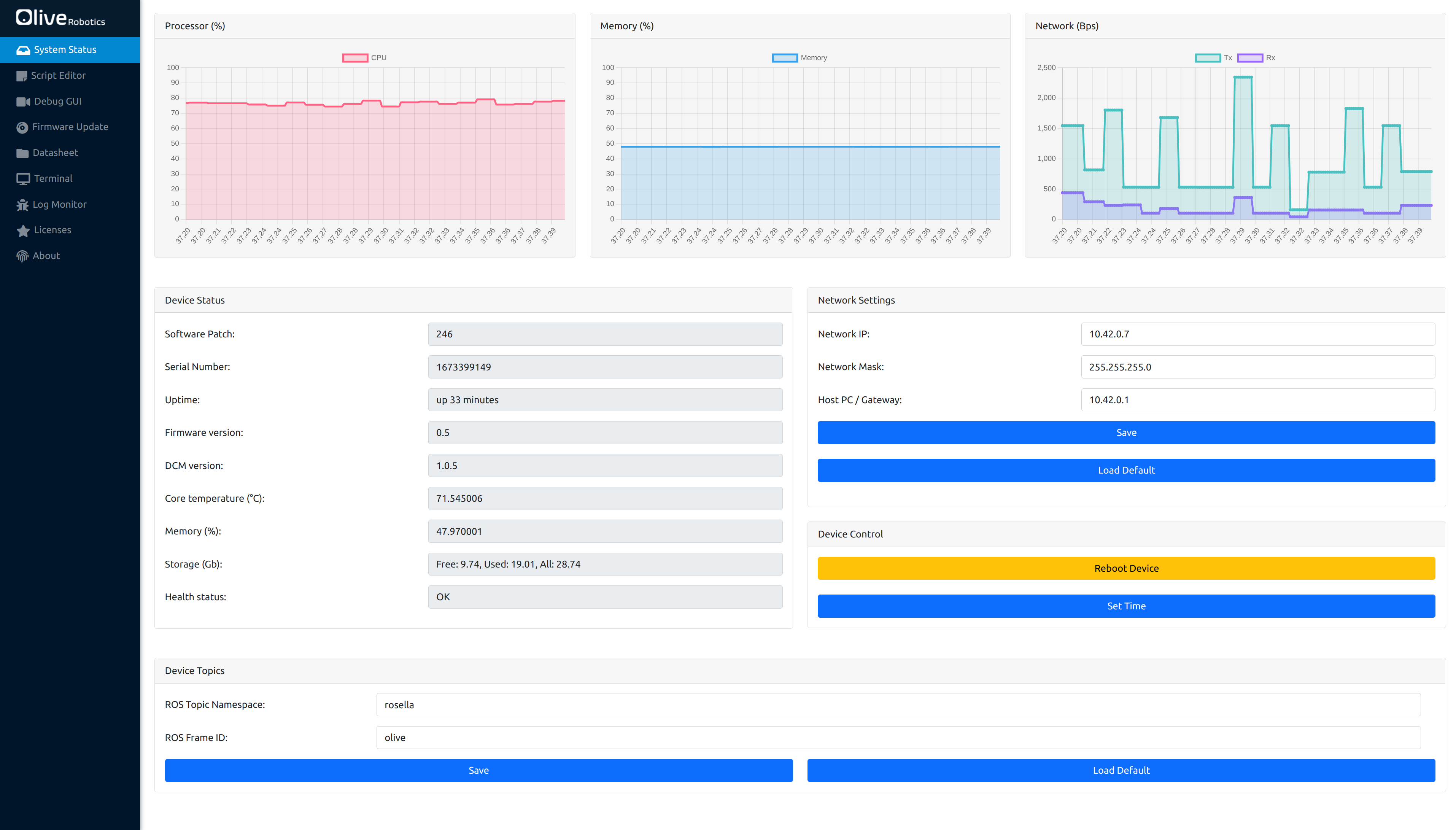
Embedded IDE
The Olive Embedded IDE is an Integrated Development Environment (IDE) that is based on the JupyterLab platform. It allows users to manage embedded files on the device, create projects, write Python or C++ based embedded applications, and run them on the modules.
The web-based nature of the IDE means that it can be accessed from any device, without the need to install additional software. This allows users to easily manage and customize the device, whether they are on-site or remotely. The IDE provides a simple and intuitive interface for creating and running code on the device, which makes it a great tool for both novice and advanced users.
The IDE's support for multiple programming languages, including Python and C++, allows for a high degree of flexibility and customization. This is especially useful for advanced users who want to highly customize their modules on-the-go.
Overall, the Olive Embedded IDE is a powerful tool that allows users to manage, customize and program the Olive Robotics' modular robotic building blocks. The Jupyter lab based interface and support for multiple programming languages makes it easy for users to create and run their own embedded applications on the device, whether they are novice or advanced users.
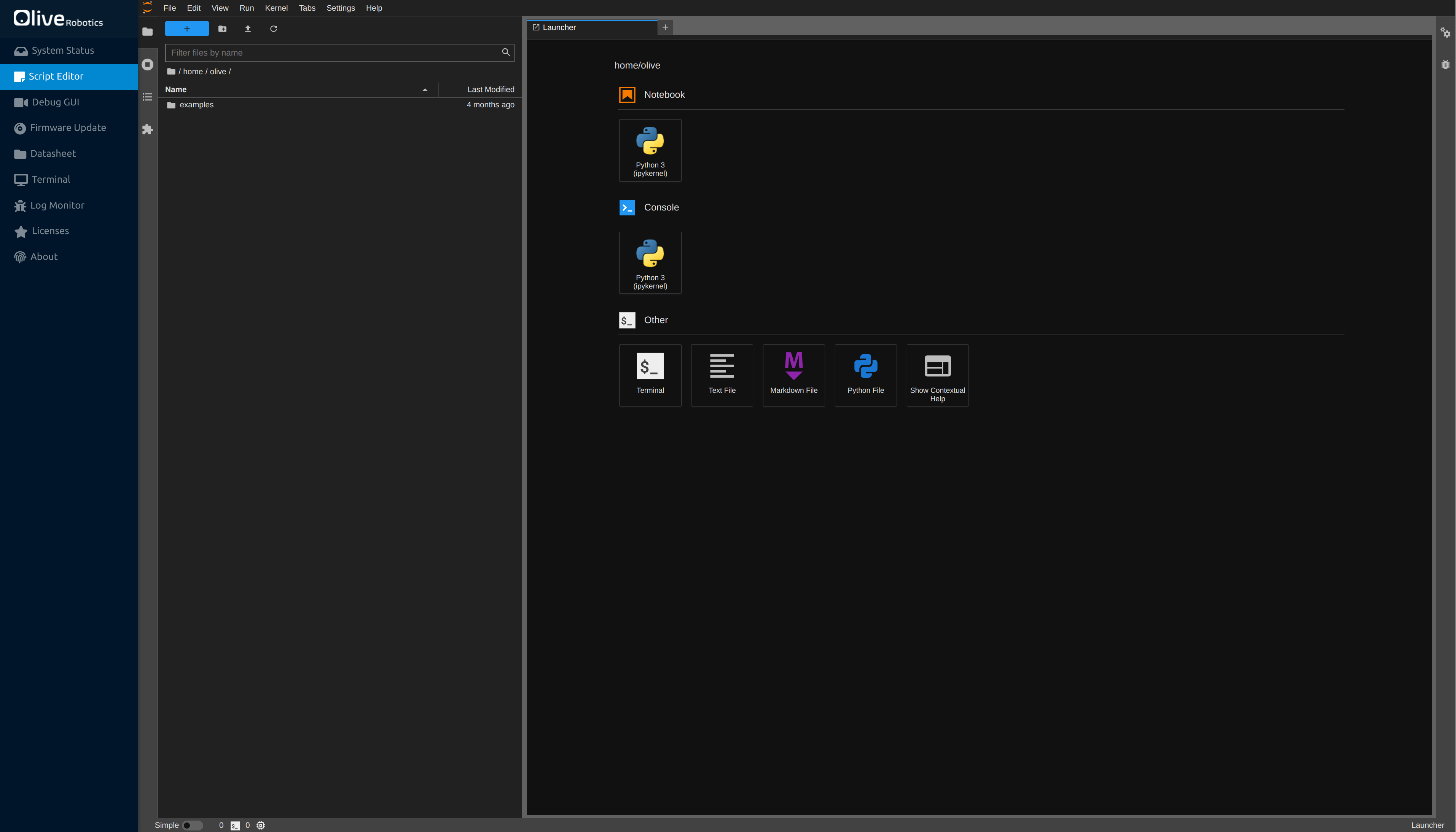
Learn more here https://jupyter.org/hub.
Patch Update
The firmware update tab is a feature of the Olive GUI that allows users to patch the firmware of the device Over-the-Air (OTA). This tab allows users to load new kernels, applications, settings, and other updates to the device simply.
The OTA firmware patch feature is useful when users have multiple devices in remote locations or when it's difficult or impossible to connect the device to a computer to update it. It also allows to have a central way to update multiple devices at once and ensure that all of them have the same software version.
Using this tab, users can easily check for available updates, download and install them on the device. The firmware update tab will typically provide information on the current firmware version and version history, as well as instructions for performing the update.
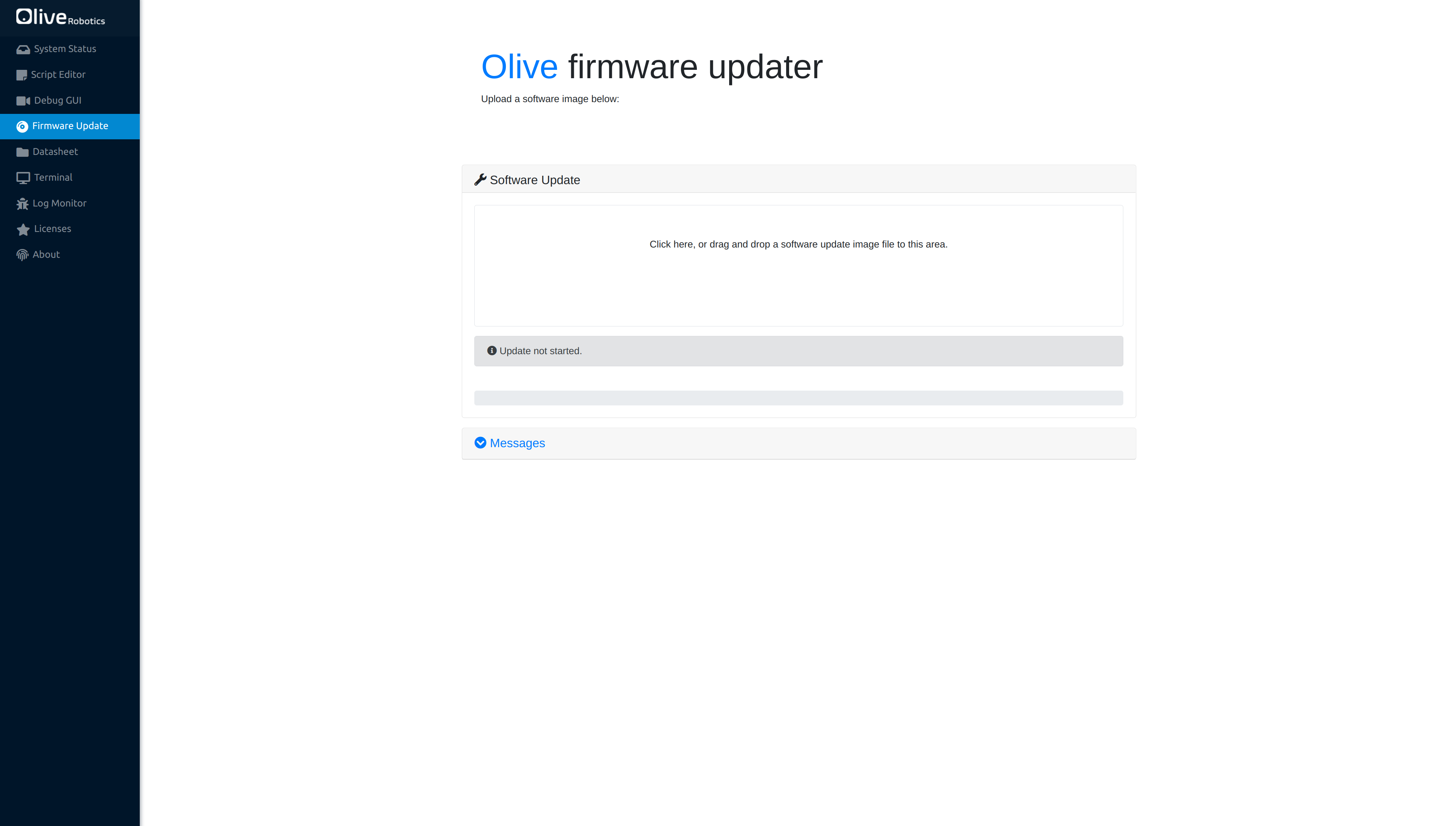
Overall, the firmware update tab is an important feature of the Olive GUI that allows users to easily update the device's firmware over-the-air, without the need for a hardware changes. This makes it an efficient and convenient way to keep the device's software up-to-date and ensure that it is running at its best performance.
Embedded Bash Terminal
The mbedded Bash Terminal is a feature of the Olive GUI that provides users with access to the shell of the real-time Linux kernel running on the device. The terminal allows users to interact with the device and its file system, giving them full control of the device's operation. The embedded Bash terminal provides an interface to run command-line utilities, scripts and other Linux commands on the device.
It's good to note that each module is running a real-time Linux kernel, named Olix-OS. which is a custom version of Linux tailored for the specific hardware, and this kernel allows the module to interact with other components and ensure that processes run smoothly.
The embedded Bash Terminal is particularly useful for advanced users who want to perform low-level operations on the device such as configuring system settings, running scripts, or troubleshooting issues. it's also useful for developers that want to test scripts or command-line utilities before deploying them to the device.
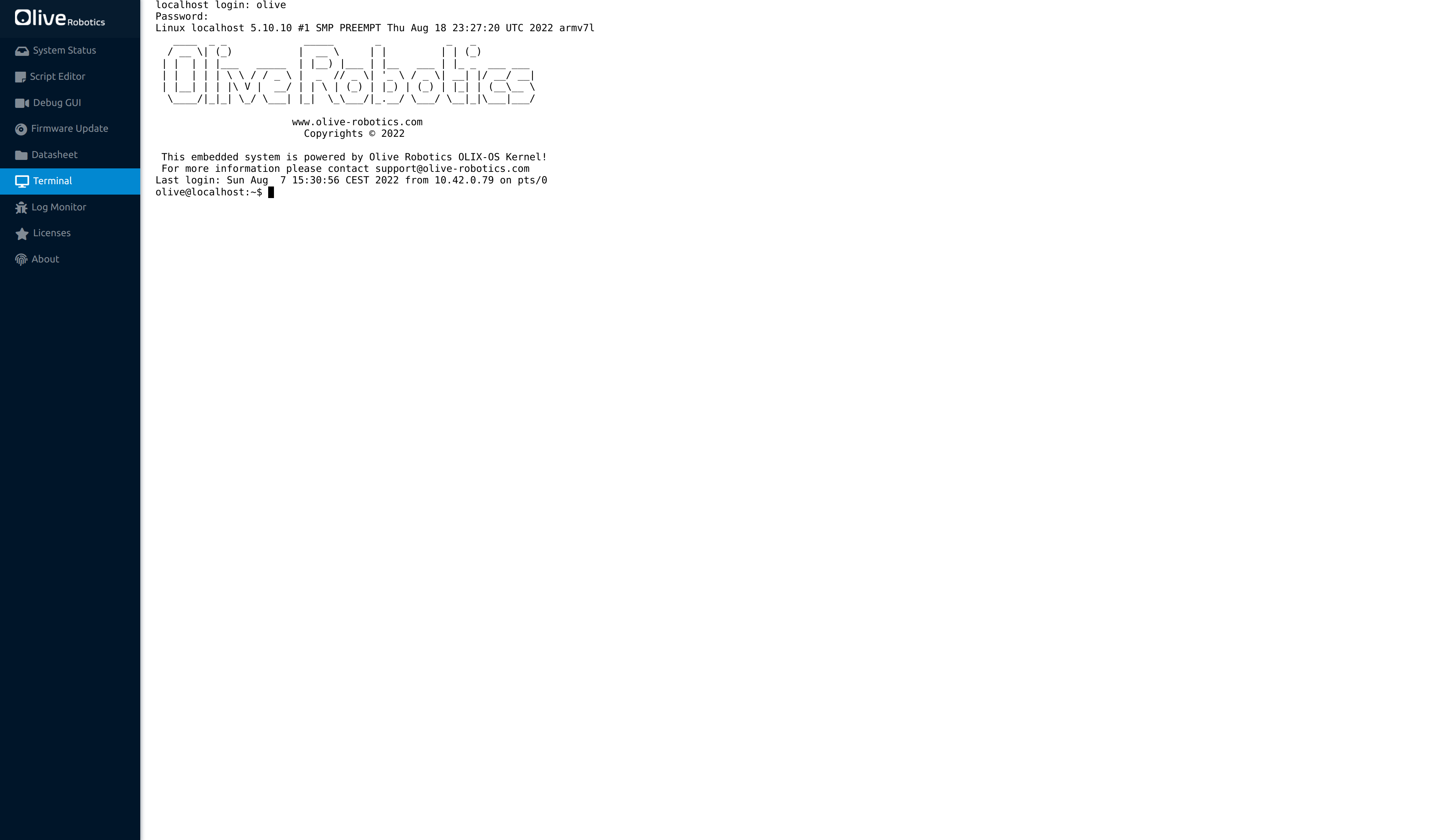
Overall, the embedded Bash Terminal is a powerful feature of the Olive GUI that allows users to have full access to the device's shell and interact with the real-time Linux kernel running on it, giving them full control over the device's operation. This feature is particularly useful for advanced users and developers who want to perform low-level operations on the device.
Onboard Logging
The onboard logging tab is a feature of the Olive GUI that allows users to view and manage the system logs of the device. System logs are a record of events that occur on the device, including system start and stop, error messages, and other system-level activity. These logs can be useful for troubleshooting and debugging issues that may occur on the device.
The onboard logging tab allows users to view the system logs in real-time, which can be helpful for identifying and resolving issues as they happen. It also allows users to search, filter and download the logs for offline analysis. Additionally, it gives the option to set the log's level of verbosity and the log's file size, which is useful for controlling the amount of data that is stored on the device.
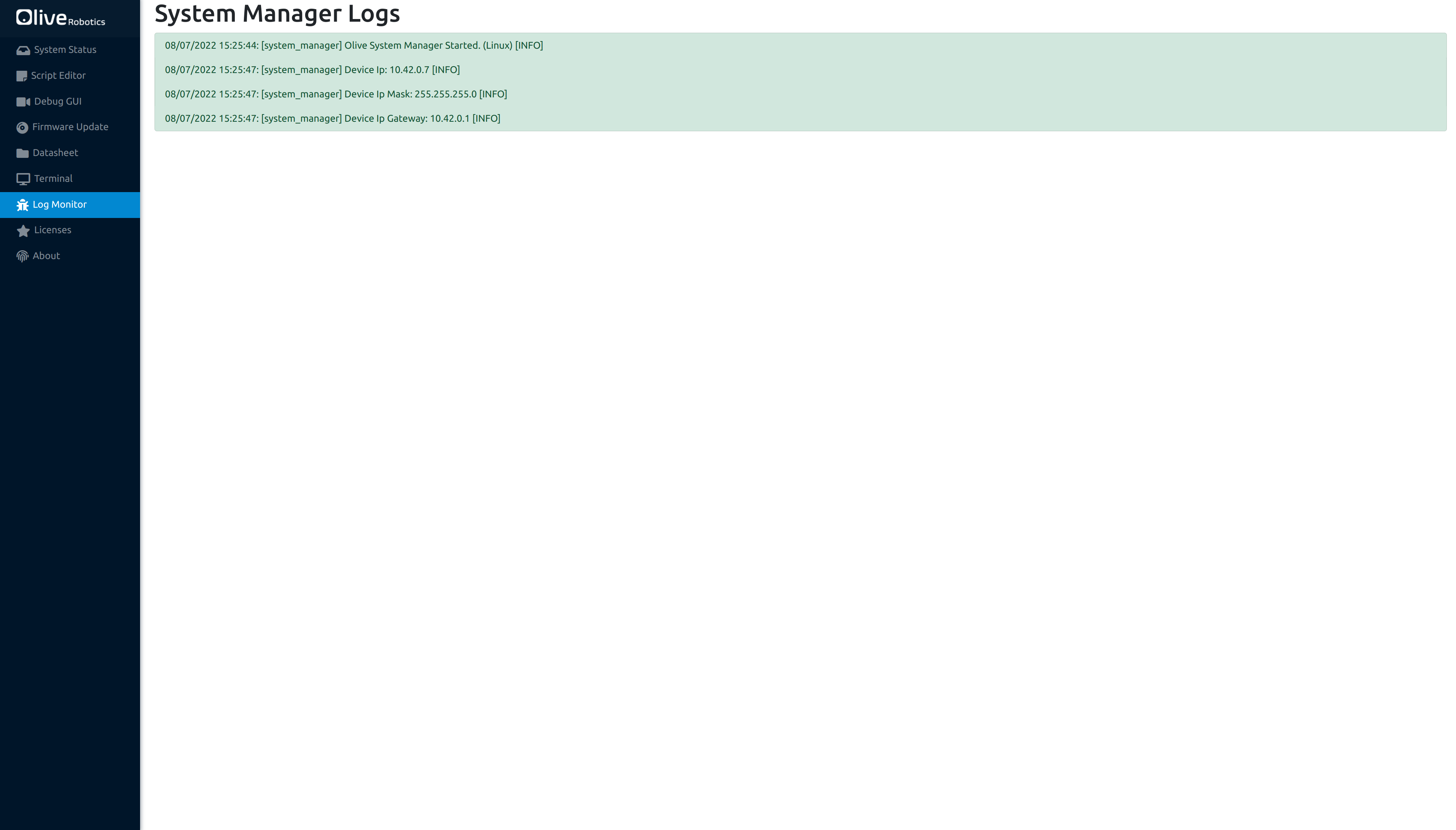
In summary, the onboard logging tab is a feature of the Olive GUI that allows users to view and manage the system logs of the device. It allows users to view the logs in real-time, search, filter and download the logs, and set the log's level of verbosity and file size. This feature can be particularly useful for troubleshooting and debugging issues that may occur on the device.